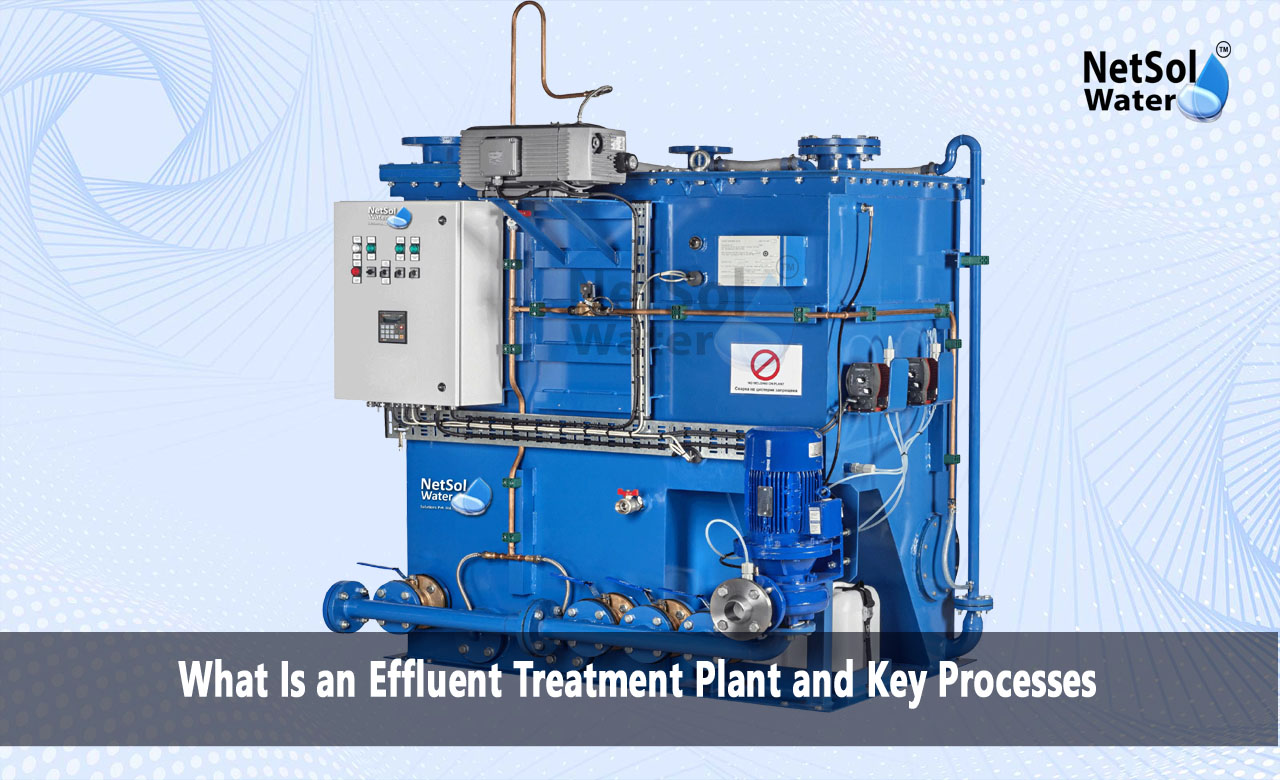What Is an Effluent Treatment Plant and Key Processes?
Industrialization has brought prosperity, convenience, and development. But at the same time, it has increased water pollution. All industries, whether chemical, textile, pharmaceutical, food processing, or paper manufacturing, produce wastewater containing toxic pollutants. To preserve the environment from devastation by the wastewater, it needs to be treated before it is discharged. And for this, an Effluent Treatment Plant (ETP) does its job here.
An Effluent Treatment Plant is a specially constructed building which treats industrial effluent and eliminates poisonous chemicals prior to disposing of it in the environment or reusing it in industry. In this blog, we simplify and detail the primary processes of an Effluent Treatment Plant and emphasize why industries and environmental protection need an Effluent Treatment Plant.
Why Do Industries Need an Effluent Treatment Plant?
Industrial waste sometimes has a blend of chemicals, oils, heavy metals, suspended solids, and harmful substances that can destroy aquatic life, pollute water sources to drink, and degrade soil quality. Discharging wastewater into rivers or onto land with no treatment can have long-term adverse impacts on the public health and environment.
Environmental governments and regulators have imposed strict standards and regulations on how wastewater is discharged and treated. An assists industries in meeting them. It ensures the water released back into the environment or re-circulated within the industry is safe and clean. In most instances, ownership of an ETP is not only non-compulsory but compulsory.
Learning the Phases of an Effluent Treatment Plant
An Effluent Treatment Plant operates based on many well-established steps. Each step is used to treat specific impurities and clean the wastewater. Let us proceed step by step.
Preliminary Treatment
The initial treatment is the preliminary process. Here, solid and bulky refuse materials are removed from wastewater. Plastic shreds, cloth rags, paper, wood shavings, or other floating debris are removed by mechanical screens. Plugging and pump and pipe destruction in the subsequent steps are avoided.
Grit chambers are also employed to get rid of sand, gravel, and other heavy solids that settle on the bottom. This treatment is done to make the wastewater ready for additional treatment by dumping coarse and visible impurities.
Primary Treatment
Following the primary screening, the wastewater is channeled into sedimentation tanks or primary clarifiers. The denser suspended solids in this case settle at the bottom by gravity. Settled solids create a layer of sludge that is later discharged and treated as a separate unit. Light particles and oils float at the surface and are skimmed.
While there is still dissolved substance in water, this process removes a considerable percentage of solid load so that the next process will be effective.
Secondary or Biological Treatment
This is the most essential phase in an Effluent treatment plant. Organic contaminants in wastewater are broken down during secondary treatment. This is typically done by way of biological reactions where microorganisms like bacteria consume organic waste and transform it into simpler harmless compounds.
One of the conventional methods is activated sludge process in which wastewater is aerated to promote growth of bacteria. Bacteria are aggregated into flocs and later settle in secondary clarifiers. Clear water then proceeds further for treatment. This reduces the biochemical oxygen demand (BOD) and chemical oxygen demand (COD) of wastewater significantly.
Tertiary or Advanced Treatment
Following biological treatment, water can have suspended fine particles, nutrients in the forms of nitrogen and phosphorus, and bacteria. Tertiary treatment or polish step is responsible for making water clean enough to reuse or release without any damage.
This can include sand filtration, activated carbon filtration, chemical dosing, reverse osmosis (RO), or UV radiation or chlorine disinfestations. Tertiary treatment reduces color, odor, residual chemicals, and microbes, producing high-quality treated water.
Handling and Disposal of Sludge
The solids removed during different phases of treatment become sludge. Such sludge is treated carefully so that it does not contaminate the environment. It is first thickened and then treated with processes such as digestion, dewatering, or drying. In certain uses, treated sludge can be reused and utilized as manure or fuel. In others, it may need to be dumped as per the rules.
Benefits of an Effluent Treatment Plant
An Effluent treatment plant. has various advantages. For instance, it helps industries adhere to environmental regulations to escape fines. It safeguards water bodies from injurious pollutants to ensure aquatic life and public health.
ETPs also encourage the recycling of water within industries. Treated water can be utilized for process applications such as cooling, washing, or even irrigation in special cases, thus lessening the load on fresh water resources. Well-functioning ETPs also enhance the image of industries as a whole byindicating their seriousness for environmental concerns.
Conclusion
An Effluent treatment plant is an important plant used to treat wastewater from industries in a proper way. It is a process of treatment through multiple steps—preliminary, primary, secondary, and tertiary—to eliminate harmful substances and make the water suitable for discharge or reuse.
In the present era and age, as water pollution is becoming a rising threatening factor, establishing and running a successful ETP is essential no longer a regulatory obligation but a societal and environmental necessity. Knowledge of the foremost processes of an Effluent treatment plant with an appreciation enables industries and society to collaborate in producing a cleaner, healthier, and greener future.
Do you need an advice or assistance on selecting the best water and waste water treatment unit? We have solutions for all your problems!
Let us know your problem, our experts will make sure that it goes away.
For an assistance or related query,
Call on +91-9650608473 Or write us at enquiry@netsolwater.com



